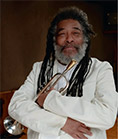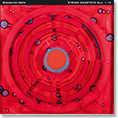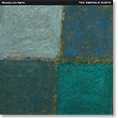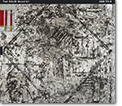THE MUSIC
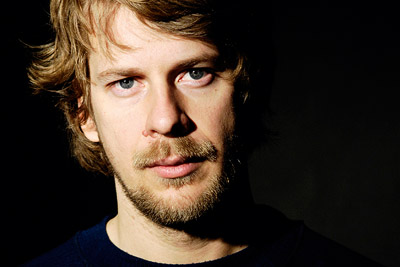
Buñuel de Jour
K‑18 (Finnish for "a film not allowed for viewers under the age of 18") was originally formed in 2006 to perform my composition "Five Kubricks of Blood" with three of my favorite musicians, Mikko Innanen, Veli Kujala and Teppo Hauta-aho. This composition grew into a total of nine pieces inspired by the films of director Stanley Kubrick, which were then included on our first recording, Some Kubricks of Blood (TUM CD 022). Our second effort, Out to Lynch (TUM CD 030) in 2011, focused on compositions and improvisations inspired by the films of director David Lynch. Through these recordings and a number of tours and other public performances over the last few years, K-18 has also developed from a mere project into a true band.
Both Stanley Kubrick and David Lynch had been among my longstanding favorites as movie directors. However, when I started working on the third K-18 album, Luis Buñuel, a more recent acquaintance, was an obvious choice.
I only discovered the films of Luis Buñuel a few years ago. I had, of course, known of him even before that, but was simply born too late to have seen any of his films when they enjoyed considerable critical and even popular success, particularly in the 1960s and the 1970s. Luckily, I found a Buñuel box in my local video store in Berlin that mostly contained later films that he had directed during those two decades.
The first film that I watched was La voie lactée (The Milky Way, 1969). I was totally fascinated by its surreal plot. Its allusions to the role of religion in our lives were really fresh for me. Although surreal, the film has remarkable depth. Following this first exposure, I then watched all of the Buñuel films that I could find and became a fan.
For Buñuel de Jour, I picked certain essential films directed by Luis Buñuel to serve as a starting point, with each composition inspired by and named after a particular film, rather than using individual characters, locations or scenes from films as inspiration as I had done for the first two K-18 recordings. "El Padre" is an exception, as it is dedicated to Buñuel himself with no reference to a particular film.
Music was an important part of Buñuel´s early films, to such an extent that for his one silent film, Un chien Andalou (An Andalusian Dog, 1929), he created a soundtrack in 1960. For this sonorized version, Buñuel included the same music (Richard Wagner´s "Liebestod" from his opera Tristan und Isolde and two South American tangos) that he himself had played on a phonograph at the film´s premiere in Paris on June 6, 1929 in front of a small by-invitation-only audience counting among its members key avant-gardists of the time, including the film´s co-creator Salvador Dalí, George Auric, Christian Bérard, Jean Cocteau, Le Corbusier, Fernand Léger, Pablo Picasso and Tristan Tzara as well as André Breton and his entire surrealist entourage.
In some of his earlier films, Buñuel used music that was obviously inappropriate for the particular visual situation in which it was used, thereby creating a counter-point to it. This made music, in a way, more independent in these films and not subservient to the visual scenes by only coloring them as was and still is often the case in films.
What I really like about Buñuel´s later films in particular is that, in most cases, they only feature music when someone actually plays an instrument or a musical group performs in a particular scene or, for example, a radio or a gramophone is seen in the background. This way, music is always real in the particular scene. As a result, these later films also have long periods without any music, thereby leaving a lot of room for imagination and fresh musical ideas.
Luis Buñuel Portolés (February 22, 1900 - July 29, 1983) was a Spanish filmmaker who worked in France, Spain, the United States and Mexico. When Buñuel died at the age of 83, his obituary in the New York Times called him "an iconoclast, moralist, and revolutionary who was a leader of avant-garde surrealism in his youth and a dominant international movie director half a century later." His career was characterized by both its longevity and its amazing creativity. Still, the main targets of his social satire were consistent: the bourgeois way of life, religion and fascism in their many forms.
Buñuel´s first picture, Un chien Andalou, was made in the silent era in collaboration with Salvador Dalí, with whom Buñuel and poet Federico Garcia Lorca had formed the nucleus of the Spanish surrealist avant-garde movement in Madrid already before Buñuel moved to Paris in 1925. This first film still captivates new audiences whenever shown at film festivals or museums or by movie societies around the world, whereas his last film, Cet obscure objet du désir (That Obscure Object of Desire, 1977) - made 48 years later - was one of his greatest commercial successes and won him Best Director awards from the National Board of Review and the National Society of Film Critics. Writer Octavio Paz, who was a strong supporter of Buñuel after he had settled in Mexico following his blacklisting in the United States, where he had lived in 1938-45, because of his alleged communist past, called Buñuel´s work "the marriage of the film image to the poetic image, creating a new reality ... scandalous and subversive."
Buñuel was a master of both silent and sound cinema, of documentaries as well as feature films, and his work spans two continents, three languages and nearly every film genre, from melodrama, satire and musical to erotica, comedy and romance, from costume drama, fantasy and crime to adventure and even western. Still, filmmaker John Huston believed that, regardless of the genre, a Buñuel film was always so distinctive as to be instantly recognizable, something that most artists can only aspire to achieve with their work regardless of the media they utilize.
I sincerely hope this music makes people interested in seeing these films again or, even better, for the first time.
Berlin, March 31, 2014
Kalle Kalima
This is how Kalle Kalima himself describes
the compositions included on this recording and the inspiration behind them:
The Phantom of Liberty (Le fantôme de la liberté) (1974)
The film shows us a surreal flow of situations, where persons in supporting roles in one sequence move into leading roles in the next and vice versa. Themes vary and the outcome is as unpredictable as the reality we live in. The film is built upon ordinary yet somehow distorted scenes. A father goes to the police in order to report his daughter missing. While a policeman questions the father, his daughter suddenly is sitting in the very room trying to say, that she is not missing. The grown-ups ignore her. The title has a connection to this line of dialogue from Buñuel´s film The Milky Way: "My liberty is only a phantom." Buñuel has said: "We so often find ourselves at complicated crossroads which lead to other crossroads, to ever more fantastic labyrinths. Somehow, we must choose a path."
The composition is like an autobahn in 7/4 meter passing singing peasants in the Austrian Alps. Mikko Innanen´s saxophone sound feels to me like the ghost of freedom and, sometimes, there is a hint of the spirit of Albert Ayler in the room.
The Milky Way (La voie lactée) (1969)
In the film, two men, Pierre and Jean (Paul Frankeur and Laurent Terzieff), travel the ancient pilgrimage road to Santiago de Compostela and meet embodiments of various Catholic heresies along the way. It is a fantastically surreal journey where anything can happen. The film ends with the following text:
Everything in this film concerning the Catholic religion and the heresies it has provoked, especially from the dogmatic point of view, is rigorously exact. The texts and citations are taken either directly from Scripture, or modern and ancient works on theology and ecclesiastical history.
These texts and citations in the film are put in new, surreal surroundings. The two main characters often encounter individuals in the dress of various time periods throughout history, or historical events take place in the modern setting of the film, including scenes from the life of Jesus Christ.
The composition also plays with time. First, there is a feeling of walking in a slow tempo for long stretches. Sometimes, the music suddenly changes, putting the listener in another setting where the music is based on a complex rhythmical form with constant time modulations in the 11/4 meter. Then, the old walking tempo reemerges and the trip goes on. Mikko Innanen plays the Maui xaphoon.
El Padre
In his films, beginning with the opening prologue of his very first film (Un chien Andalou) in 1929, Luis Buñuel often appeared in supporting roles, a few times even in the guise of a priest although he had become a lifelong atheist and a critic of the Catholic Church after having received his early education in a Jesuit school and being religious as a youth. For me, the Catholic Church and its beliefs and practices form a strong and dark theme throughout Buñuel´s oeuvre.
The composition is inspired by those sullen characters played by the master himself. There is something spooky about the presentation of religion and priests in his films and this is also a starting point for the composition, which has a slow and dark feel to it. The bass line has a connection to the music of old horror films with its repressive and repetitive pattern. In addition to Buñuel, Charles Mingus and Eric Dolphy have also served as musical inspiration for this composition. Their musical worlds often take you to similarly surprising places as do Buñuel´s films.
Los Olvidados (The Forgotten Ones) (1950)
The film is a realistic, hard picture about youth in the slums of Mexico City. It is a story of how children and youngsters living in poverty can become killers. The film is very direct and its visual presentation is incredibly strong. Prior to making the film, Buñuel visited slums to study the life of the people living there. The film was a comeback of sorts for Buñuel and it was considered a great success for him after a long period with less attention.
The composition also has a harsh and aggressive feel to it. It is based on a hammering rock groove played on a microtonal version of an open bluegrass guitar tuning. The saxophone is equipped with a contact microphone and played through a guitar amplifier, sounding a bit like a blues harp.
Belle de Jour (1967)
In the film, the young and beautiful Séverine (Catherine Deneuve) has a good life on the surface with a loving and rich husband. Still, she is unfulfilled sexually. Séverine starts to work at a brothel during the day when her husband is working and ends up falling in love with a criminal called Marcel (Pierre Clémenti). The film builds to a great tension, but its ending is left open as if to ask: was it all just a dream or did it really happen?
The composition has a sentimental tango feel combined with free improvisation. The music is trying to capture the dreamy and sentimental quality of the film.
Diary of a Chambermaid (Le journal d'une femme de chambre) (1964)
The film is based on a book by Octave Mirbeau from 1900. Buñuel´s film adaptation, in turn, is set in the year 1928. The main character is Celestine (Jeanne Moreau), a female servant working for decadent rich people and having to do the strangest things to please her masters, for example, wearing old boots to satisfy an aging shoe fetishist. One of the other servants is a fascist who has raped and killed a child. In the film, following a short prison sentence, he is free and can be seen becoming active in the rising fascist movement. The film paints an incredibly dark picture of the old European class society in the unstable period separating the two World Wars.
The composition is based on polyfonic chromatic melodies that slowly evolve and change. The melodies form an abstract canon. All the voices are fighting to be heard. Finally, music emerges in an evil empty space trying to capture the gloomy atmosphere at the end of the film.
The Discreet Charm of the Bourgeoisie (Le charme discret de la bourgeoisie) (1972)
The film is a surreal trip that consists of several thematically linked scenes: five gatherings of a group of bourgeois friends who try to have dinner together, but never quite manage to do so. These fine and beautiful people also engage in some illegal activities, such as cocaine dealing. Many scenes in the film deal with people admiring the outer signs of status. In one scene, a couple comes back to their own house where a man unknown to them greets the couple in their gardener´s clothing. After they angrily throw him out, he returns in his bishop´s robes and is embraced with deference, thereby exposing the couple´s prejudice, snobbery and hypocrisy. The bishop asks to work for them as their gardener. He also explains that, in his childhood, his parents had been murdered by arsenic poisoning, and the culprit had never been apprehended. Later in the film, the bishop goes to bless a dying man, but when it turns out that this is the very man who had killed his parents, he first blesses and then kills him by firing a shotgun - thus closing the circle of hypocrisy.
The composition is also playing with various surfaces trying to reveal the spaces beneath them. The music goes through fast changes, but there is an underlying punk feeling to all the activities. The improvisation features an electric guitar, which is being looped live during the recording and then played back.
Tristana (1970)
The film that is based on a novel by Benito Pérez Galdós about love that cannot work in the end. Tristana (Catherine Deneuve) is an orphan adopted by a nobleman named don Lope Garrido (Fernando Rey). Don Lope falls in love with Tristana and comes to treat her both as his daughter and as his wife from the age of 19. However, by the age of 21, Tristana begins to find her own voice, demanding to study music, art and other subjects through which she hopes to find her independence. She meets a young artist, Horacio Díaz (Franco Nero), falls in love, and eventually leaves don Lope to live with Horacio. When Tristana falls ill, she returns to don Lope and ends up marrying him. Finally, when don Lope in turn is ill, Tristana finishes him off by feigning to call a doctor but instead opening a window to let in the winter cold.
Just as the relations between the main characters in the film, the composition is also a long arch of accelerations and decelerations. Each instrument has a solo moment as if the story would have four different voices. There is an underlying optimistic feeling to the music.
Simon of the Desert (Simón del desierto) (1965)
The film´s main character, Simón (Claudio Brook), has lived for six years, six weeks and six days atop an eight-meter pillar in the middle of a desert, praying for spiritual purification. After a congregation of priests and peasants offers him a brand new pillar to stand on, Simón comes down and is offered priesthood, which he refuses before climbing up the new pillar. Satan, in the form of a young and enticing woman (Silvia Pinal), visits him three times: first, as an innocent girl chanting curses in Latin and, second, disguised as Jesus. She constantly tries to make Simón give up his task and climb down the pillar, but he refuses every time. The third time Satan, now clad in a toga, climbs up the pillar and vanishes with Simón for good. In an anachronistic turn, the couple find themselves in a crowded 1960s nightclub with an instrumental rock band, a popular Mexican group at the time called les sinners, playing on stage. Satan tells Simón that the song that the hipsters at the club are dancing to is called "Radioactive Flesh." Simón protests, wanting to go home, but Satan says that he cannot.
The composition is a collective improvisation with an anxious, halting feel. Mikko Innanen´s Celtic hornpipe, played with a contact microphone through an amplifier, cries like Satan calling for Simón and the bass sounds like a bag of snakes hissing.
That Obscure Object of Desire (Cet obscur objet du désir) (1977)
The film tells the story of a romance between Mathieu (Fernando Rey), a middle-aged, wealthy Frenchman, and Conchita (played by both Carole Bouquet and Ángela Molina), a young, impoverished flamenco dancer from Seville. This was Buñuel´s last film in which he had two actresses playing the same leading role. It is an abstract love story taking place in Spain and France at the end of the 1970s. Terrorism also assumes an important role in the film, which ends with a bomb explosion apparently claiming the lives of the leading characters. The film somehow manages to go through various aspects of life - its struggles in all different forms: political, sexual and religious.
The composition tries to capture this feeling with its microtonal melodies - microtonal blues phrases where the independent voices are struggling with each other to be heard.
An Andalusian Dog (Un chien Andalou) (1929)
It is said that this is the most famous short film of all time. The film was truly revolutionary in its time and has lost none of its freshness since. The film´s perhaps most shocking moment, when an eye of a woman is being sliced open with a razor, still feels as real as it ever did (although Buñuel later said that he had actually cut open the eye of a dead calf instead). Although only 16 minutes in length, the film opened up truly new visual worlds.
In the composition, I tried to capture the hypnotic feeling of the film using repetitive modal material as its basis.
Viridiana (1961)
The film is a touching story about a young novice, Viridiana (Silvia Pinal), who has to confront the limits of her own idealism, when her uncle, Don Jaime (Fernando Rey), tries to seduce her and proposes to her just before she is to take her vows. The beggars´ banquet in the film is one of the greatest cinematic scenes by Buñuel and maybe also in the history of movies of all time.
The composition is a collective improvisation with an optimistic ending.

